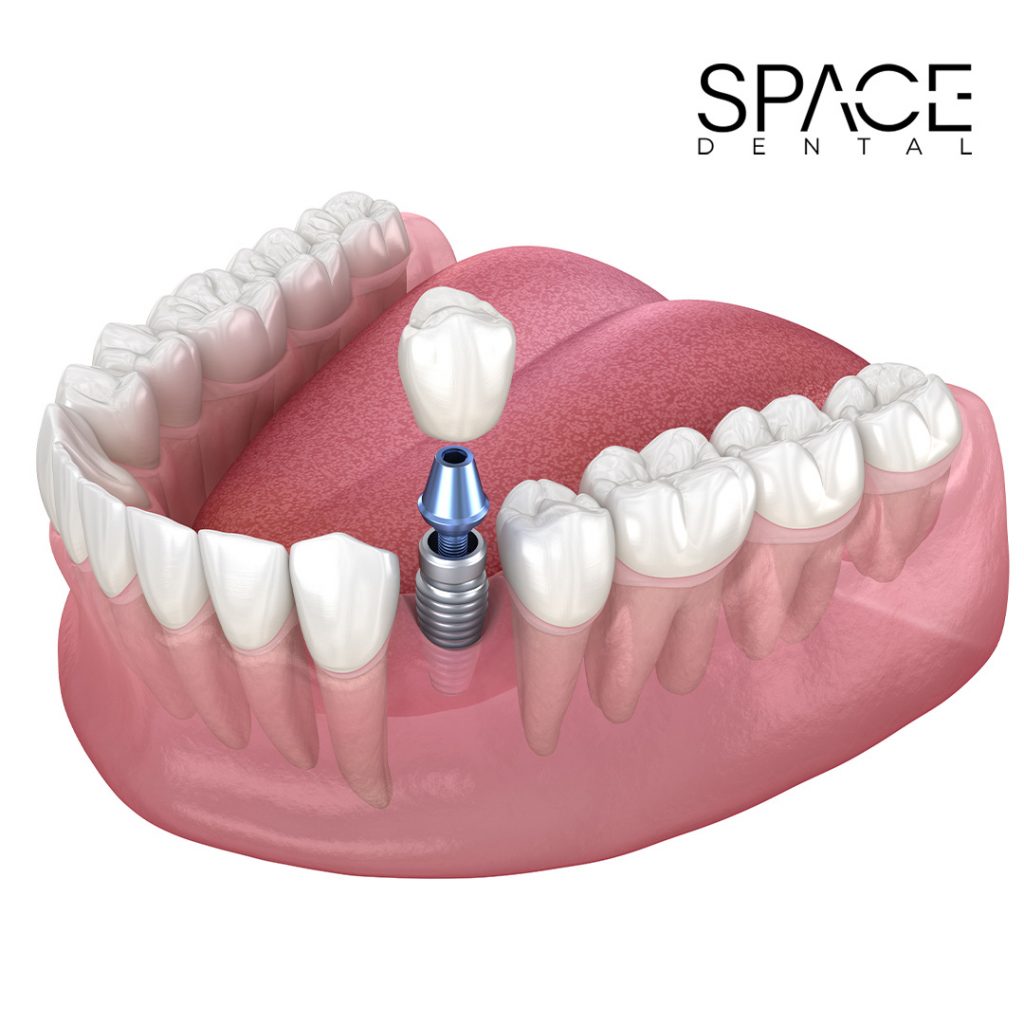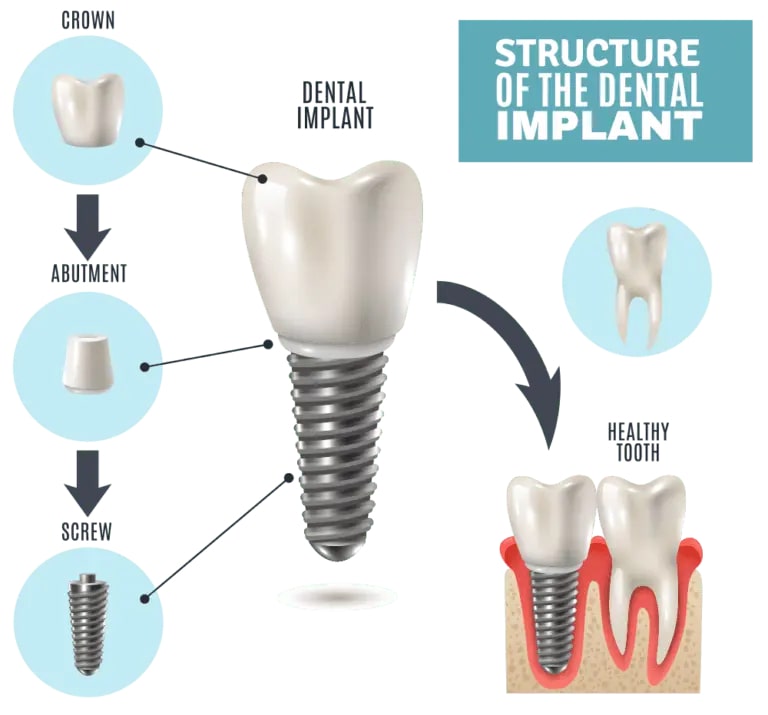Experience High Quality Dental Implants Kent: Enhance Your Self-confidence
Wiki Article
Experience the most up to date Innovations in Oral Implants Technology
As the area of dentistry continues to evolve, the improvements in oral implant modern technology have been nothing short of exceptional. The combination of technology is transforming the capability of dental implants, assuring enhanced results and patient satisfaction.Advanced Materials for Boosted Durability
In the realm of oral implants modern technology, the integration of advanced materials has dramatically added to boosting resilience and longevity of these essential oral prosthetics. The utilization of materials such as titanium alloys, zirconia, and ceramic compounds has reinvented the area by supplying boosted toughness, resistance, and biocompatibility to deterioration.
Titanium alloys are extensively used in dental implants as a result of their outstanding strength-to-weight ratio, deterioration resistance, and compatibility with the body. These alloys make sure the stability and durability of the implant by standing up to the forces applied throughout speaking and chewing, offering a reliable option for people seeking long lasting tooth replacements.
Zirconia, a type of ceramic material, has gotten popularity for its biocompatibility and natural tooth-like look. Its high stamina and resistance to put on make it an ideal option for dental crowns and bridges, improving the general aesthetics and functionality of the dental implant.

Digital Imaging for Accurate Placement
The evolution of oral implants technology has actually better progressed with the assimilation of digital imaging methods, making certain exact placement of these prosthetics for optimum useful and aesthetic end results. Digital imaging plays a crucial duty in the preparation and placement of dental implants by providing thorough 3D photos of the patient's jawbone framework. This modern technology enables dental experts to examine bone density, find essential frameworks, and intend the precise setting and angle for implant placement with unparalleled precision.By making use of digital imaging, dental professionals can produce online surgical overviews that function as a roadmap throughout the implant positioning procedure. These overviews are customized for every person, taking into consideration their one-of-a-kind makeup and the wanted result. This degree of precision not only improves the success rate of oral implant procedures yet additionally lowers the risk of complications.
Moreover, digital imaging allows dental practitioners to visualize the last prosthetic restoration before the actual placement of implants, enabling for meticulous planning and making sure that the end result fulfills the person's aesthetic assumptions. Overall, the assimilation of digital imaging innovation has actually transformed the area of dental implants, offering individuals a more foreseeable, reliable, and patient-specific therapy method.

Minimally Invasive Surgical Techniques


Developments in medical approaches have actually led to the growth of minimally intrusive strategies in the area of dental implantology. These strategies intend to minimize trauma to the individual, reduce recuperation times, and improve total treatment outcomes. Minimally invasive operations involve smaller sized incisions, specialized instruments, Your Domain Name and progressed imaging technologies to precisely place oral implants with very little disturbance to surrounding cells.
One key element of minimally invasive methods is making use of assisted surgical procedure, where 3D imaging and computer-aided design software program are utilized to plan the implant positioning with terrific accuracy. This enables a much more predictable outcome and can usually remove the need for considerable flap surgery.
Moreover, innovations in products and dental implant layout have actually likewise added to the success of minimally invasive strategies. Implants with enhanced surface residential or commercial properties advertise faster osseointegration, reducing the recovery time required before the prosthetic reconstruction can be put.
3D Printing for Personalized Solutions
Utilizing 3D printing modern technology in oral implantology enables for the creation of extremely tailored options tailored to individual person needs and anatomical variants. This cutting-edge innovation allows oral professionals to create and make dental implants with phenomenal precision and accuracy. By utilizing electronic imaging methods, such as cone beam calculated tomography (CBCT), thorough 3D versions of the patient's mouth can be produced to assist the implant planning procedure.One of the key benefits of 3D printing in dental implantology is the capacity to produce patient-specific implants that perfectly fit the special composition of each individual. This customized method aids boost the overall success and durability of the implant by making sure ideal fit and positioning. Furthermore, 3D printing allows for the production of complex geometries and find out detailed structures that would certainly be challenging or difficult to accomplish using conventional manufacturing techniques.
In addition, 3D printing innovation enables dental experts to improve the implantation procedure, lowering surgical treatment time and boosting overall patient experience. With its capacity to produce customized services quickly and successfully, 3D printing is changing the field of dental implantology, offering patients ingenious therapy alternatives and enhanced end results.
Integrated Modern Technology for Improved Performance
Carrying out sophisticated innovation in dental implantology improves functionality and accuracy, elevating the criterion of care for people undertaking implant procedures. Integrated innovation plays a vital function in improving the overall success and resilience of oral implants.Additionally, the assimilation of computer-aided style and computer-aided production (CAD/CAM) technology allows the development of customized dental implant repairs with outstanding precision. CAD/CAM systems use digital impressions to make prosthetics that flawlessly fit the patient's unique anatomy, making certain optimal comfort and functionality. Additionally, making use of robotic-assisted surgery in dental implant positioning enhances precision and minimizes the danger of human error.
Verdict
Finally, the most recent technologies in dental implants innovation offer improved resilience with advanced products, exact placement with digital imaging, minimally intrusive surgical techniques, tailored options with 3D printing, and improved functionality with incorporated technology - Dental implants Kent. These improvements in oral implants innovation are changing the area and offering people with more effective and efficient therapy choices for restoring their smiles and oral health and wellnessThe integration of technology is transforming the performance of oral implants, guaranteeing improved end results and individual satisfaction.
The development of oral implants modern technology has actually additionally progressed with the combination of electronic imaging strategies, making certain accurate placement of these prosthetics for ideal functional and aesthetic end results. Minimally invasive medical treatments involve my sources smaller incisions, specialized instruments, and progressed imaging technologies to exactly position dental implants with marginal disturbance to bordering tissues.
Implementing advanced technology in oral implantology boosts performance and accuracy, elevating the criterion of care for patients undertaking dental implant procedures. Dental implants Kent. Integrated technology plays an important role in enhancing the total success and sturdiness of oral implants
Report this wiki page